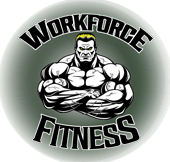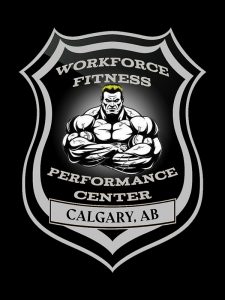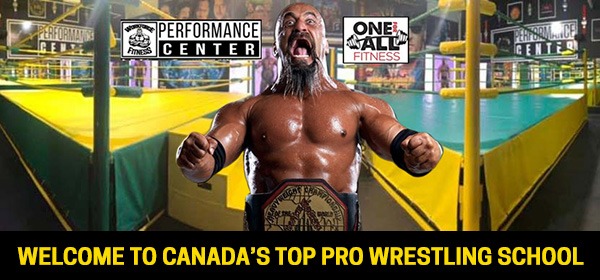Referee, Managers & Valet Training Program
In Professional Wrestling, Referees, Managers & Valets are important figures present in or near the ring during matches. The referee’s on-stage (kayfabe) purpose is similar to that of referees in combat sports such as boxing or mixed martial arts, that is, as an arbiter of the rules and the person charged with rendering decisions. In reality, the Referee, Managers & Valets are, like the wrestlers, a participant in executing a match in accordance with its script including its predetermined outcome and is responsible for controlling the flow of the match and for relaying information or instructions from backstage officials to the wrestlers. Like wrestlers, Referees, Managers & Valets are also responsible for maintaining kayfabe, and referees must render decisions in accordance with the promotion’s kayfabe rules.
Purpose
The kayfabe purpose of a professional wrestling referee is to render decisions (Pinfalls, Submissions, Disqualifications, Count-Outs) during a match but the legitimate purpose they serve is to give messages to wrestlers about the progress of matches, communicate with them about the amount of time left (plus the beginning and end of commercial breaks on live broadcasts), and if necessary help them gauge the crowd reaction as well as reminding them of the match script. They also have a key role in ensuring that the wrestlers are physically capable to continue and to stop the match or inform the opponent if there is a risk of injury present. Referees wear wireless earpieces to allow backstage officials to communicate with them during matches. Referees are also selected by their employers, subject to their height and weight, and normally referees would be no more than six feet tall, weigh no more than 180 lbs. and may generally display a non-athletic physique; examples of this are WWE referees Mike Chioda & Charles Robinson. The purpose of this size discrepancy is purely to emphasize the height, weight and musculature of some of the larger wrestlers and to compensate for smaller stars.
In recent years to prevent the spread of blood-borne diseases such as Hepatitis, WWE referees now keep a pair of latex Medical Gloves in their pockets. The gloves are put on whenever a wrestler is bleeding.
The "X" Sign
Although professional wrestling is Worked, real injuries can be sustained. If this occurs, the referee raises his hands above his head into an “X” shape to alert backstage officials and paramedics, as well as any other wrestlers that what is going on is really happening. An “X” Sign across the chest is a warning, it signifies that a wrestler may be injured, but is still able to compete. In recent times, Total Nonstop Action Wrestling (TNA) and WWE have used the “X” Sign to signify storyline as well as legitimate injuries. An example of this is when A.J. Styles was kayfabe injured after being hit with a Powerbomb off the stage through a table by Bully Ray. Another example is during the 2006 Money in the Bank ladder match at WrestleMania 22 when Matt Hardy performed a suplex on Ric Flair from the top of the ladder and the two referees, Jim Korderas and Mike Chioda, used the “X” Sign. Flair re-entered the match minutes afterwards, showing he was not legitimately injured.
After the “X” Sign is given, the officials backstage would communicate to the referee, if necessary, revised plans to end the match quickly. There is also a “Blow Off” sign, raising both arms straight up, if a wrestler seemed injured but feels he can continue.
Distractions & Bumps
Most Professional Wrestling Promotions have a kayfabe rule that referees do not make decisions based on anything they don’t personally witness. Because of this, distracting or incapacitating the referee is often an element of a match, especially in standard matches where a wrestler is liable to lose a match by disqualification for performing an illegal move. Distraction or incapacitation of the referee is usually a precursor to the villain wrestler either performing a normally illegal move without any consequence, or outside interference in the match (a Run In). Less commonly, the heroic wrestler might appear to win the match by pinfall or submission if not for the referee being distracted or incapacitated. These pre-planned temporary injuries to the referee are known as “Bumps”.
Distracting the referee is usually a deliberate tactic done by the villain, his manager, or someone else in his corner. It can also take the form of the referee taking an inordinate amount of time to talk to the heroic wrestler for violating the rules. Incapacitating the referee is usually done by a purportedly accidental collision with a wrestler, or a wrestler missing an attack on an opponent and hitting the referee instead, though sometimes a referee may be incapacitated by a deliberate attack by the villain or his manager. When any of these happen, the referee usually appears to be knocked unconscious for a period of time by a move that is not considered particularly devastating when applied to a wrestler.
New Camps Start Every Month!
1-Month Referee, Manager & Valet Training Program Pricing
| Registration Fee: | $500.00 |
| Training Fee: | $500.00 |
| 1 Month Gym Membership: | Free |
| WFPC T-Shirt: | Free |
| Referee Jersey: | Free |
| Sub-Total: | $1,000.00 |
Fully Furnished Housing Facility Includes (Optional):
| $700.00 |
| Total: | $1,700.00 |
Special Referees
TNA Performer Traci Brooks,
Who Occasionally Refereed Matches in the Company's Knockout Division
A Special Guest Referee is a stipulation for any match in which the usual referee is replaced with a “Guest” filling in as the official. Celebrities (such as Muhammad Ali in the main event of WrestleMania I), managers and other wrestlers can “Guest” as the special referee. In some cases, a special referee is put into a match which is already a different match type or stipulation (for example: Hell in a Cell with a special referee). The special referee would often be biased towards or against one of the competitors or could be assigned as the special referee to ensure the match is called down the line. In the WWF in September 1999, after all the referees got sick of continuously being attacked by wrestlers, they kayfabe went on strike, leading to other WWF workers (most notably Harvey Whippleman & Tom Prichard, along with a non-striking Jim Korderas) becoming “Scab” referees until the night after Unforgiven, where Vince McMahon gave the regular referees more authority in matches (along with fining Triple H for striking one that same night).
Though rare, it is not unheard of for normal referees to engage in storylines where they become biased against or in favor of particular wrestlers in a manner usually reserved for special referees. One of the more famous examples of this is the case of Earl Hebner in 2000, who became biased against then-dominant heel Triple H out of spite towards Triple H constantly abusing him during their matches. This culminated on the April 26, 2000, edition of Raw is War, where Hebner counted as fast as he could while Chris Jericho was pinning Triple H with the WWF Championship on the line. A more recent example is Scott Armstrong, a referee who was in cahoots with The Authority during the years of 2013 through 2016, often making fast counts when it was advantageous to members of the Authority and often coming out during ref bumps during matches where Authority members were competing.
Special Outside Referee
Also known as special enforcer or special guest enforcer is same as the special referee, but the guest referee stays on the outside of the ring enforcing what the normal referee does not see. These guests are sometimes known as “Enforcers”, the most famous of which was Mike Tyson, who served as the special guest enforcer for the WWF Championship match between Stone Cold Steve Austin & Shawn Michaels at WrestleMania XIV, & Chuck Norris who served as special guest enforcer at the 1994 Survivor Series in a match between The Undertaker & Yokozuna.
Special enforcers can become regular referees if the original inside referee becomes (kayfabe) permanently incapacitated. Otherwise though, the enforcer generally has no decision-making power, and is really put in the match to physically force wrestlers to obey the rules or physically remove interfering wrestlers from ringside.
Personal Referees
An effective Gimmick for the villain wrestlers is to have a personal referee, who is on the permanent payroll of the villain. The referee can be simply a lackey, or a loyal ally with a senior position. This is a broader extension of the “Corrupt Referee” gimmick, in that the referee’s allegiance is openly made public, and is blatantly flaunted to incense the audience – the referee himself is exempt from punishment due to his official position.
Examples include when the New World Order recruited WCW’s senior referee Nick Patrick, and he became the sole official of nWo matches. He officiated every single match of the nWo Souled Out event in 1997. Ric Flair & The Four Horsemen had their own personal referee in WCW, Charles Robinson, who eventually adopted the look and mannerisms of Flair, and earned the nickname “Little Naitch”, from Flair’s nickname “Nature Boy”. For a time in WCW, referees would not work Scott Steiner’s matches, so he employed Mark “Slick” Johnson as his personal referee. Johnson had black and white paint on top of his head, wore an nWo logo on his shirt and had a whistle around his neck, just like ECW’s Bill Alfonso. Another example of this is when Kurt Angle had Daivari as his personal referee during late 2005, with Daivari starting as the referee of Angle’s match against John Cena for the WWE Championship at the 2005 Survivor Series. After Eric Bischoff was fired weeks after this, Daivari was relegated to being Angle’s manager.
Attire
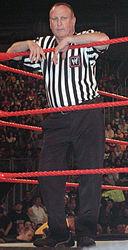
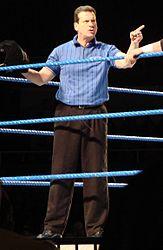
A comparison of both Raw & SmackDown Brand referee attires from past years, though there is no longer any difference between the attire of Raw & SmackDown referees
WWE referees have had a series of different uniforms throughout the years. From the 1970s until 1983, still operating under the World Wide Wrestling Federation banner, referees wore black and white striped shirts, comparable to referees in other sports, such as Hockey, Basketball, & American Football. In the mid-1980s until 1995, a World Wrestling Federation (WWF) referee’s attire consisted of a blue collared shirt with black trousers, boots, and Bow Tie, similar to that of a boxing official. Beginning with the March 13, 1995 episode of Monday Night Raw, the uniform was changed back to the black and white striped shirt with a WWF logo patch on the left breast as well as the shoulders. With the WWE Brand Extension in 2002, referees appearing on SmackDown! began wearing blue striped Polo Shirts, differentiating themselves from the Raw referees, who continued to wear black and white shirts. When ECW was revived in 2006 their referees were given black shirts. As of 2007, they had grey and black Polo Shirts. As of November 2008, however, all referees wore black and white striped shirts and were no longer brand exclusive. On the November 15, 2010 episode of Raw, the referees wore the “Boxing Referee” attire as part of the Old School Raw special episode. During breast cancer awareness month, the referee shirts feature special WWE patches that incorporate the Susan G. Komen logo and pink ribbon next to a smaller version of the WWE corporate logo. Since the re-establishment of the brand extension in 2016, WWE referees have given colored designations on the patches with the logo; for instance, blue for SmackDown and red for Raw.
In WCW, referees wore collared shirts with bow ties until around 1999, when they switched to striped shirts. During The Invasion storyline in WWE (known at the time as WWF), the WCW referees wore white polo shirts, switching near the end of the storyline to baseball-jersey style grey shirts with a small black WCW logo on the left breast and one on the right sleeve. In ECW, referees first wore striped shirts (as they split off from the NWA), and later wore an all-black uniform akin to those of Mixed Martial Arts officials, later with a half-black, half-red shirt. The all black uniform would return for the first two WWE One Night Stand events, before giving way to the brand extension ECW referee shirts.
In TNA, referees switch between the striped shirts and the “Boxing Referee” attire on occasion. TNA referee shirts consist of a small Impact Wrestling patch on the left breast and a giant one on the back.
In most Territories of the NWA, referees wear the traditional black and white striped shirts, many times with an NWA logo “Official Referee” patch on the left breast.
In All Elite Wrestling, referees wear the traditional black and white striped shirts, with the AEW logo on the right breast.
Special referees wear themed versions of these; for example, if a regular female wrestler or celebrity is cast as one, she would typically wear a skimpier version of a normal referee’s shirt (as in the above photograph), a practice that as of 2019 is much harder to pull off as both WWE and AEW have women as referees on a regular basis. Others may just add a referee-style shirt to their normal costume such as the case of Mick Foley, who wore a rumpled white dress shirt with black stripes painted on while arbitrating matches. In these cases, the emphasis is on the character temporarily assuming the referee’s role.
How Much do Professional Wrestling Referees Make?
They get paid up to $12,000 for a big Pay-Per-View match and they also get bonus packages and free travel expenses when they calling a main-event match at a Pay-Per-View. Charles Robinson & Mike Chioda are at the top of the WWE Referees salaries list with each taking home $200,000 per annum.
Why do WWE Refs Wear Earpieces?
They also have a key role in ensuring that the wrestlers are physically capable to continue, and to stop the match/inform the opponent if there is a risk of injury present. Presently, Referees Wear Wireless Earpiece’s, to allow backstage officials to communicate with them during matches.
What is the Referee Position in Wrestling?
There are only Two Positions from which Referees start, or continue a match. The first is neutral position, with both wrestlers standing and facing each other. The other is the Referee’s Position, where one Wrestler starts on his hands and knees down on the mat, and the other starts on top, behind and in control.
Notable Referees
- Randy Anderson
- Bill Alfonso
- Brian Hildebrand
- Charles Robinson
- Dangerous Danny Davis
- Dave Hebner
- Earl Hebner
- Jimmy Korderas
- Joey Marella
- John Cone
- Mike Chioda
- Nick Patrick
- Rita Chatterton (First official WWE referee during the 1980s)
- Scott Armstrong
- Shane McMahon (using the name Shane Stevens)
- Theodore Long
- Tim White
- Tommy Young
- Jessika Carr
- Thomas Kearins
WWE Men in the Shadows: The 10 Most Notorious Referees
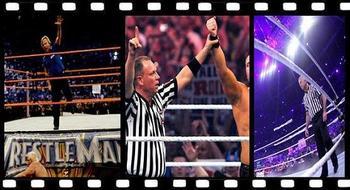
With no referees, there would be no pro-wrestling. Their role is too often underestimated, despite the fact that they are essential to get things working in the ring.
A referee can be compared to an orchestra conductor, and the wrestlers can be assimilated to his musicians. However, a referee must avoid the spotlight to let the grapplers shine.
Usually, a referee will be under six-feet tall and their weight will be no more than 180 pounds. The small size it to make the big guys look even bigger and to make sure the cruiserweights don’t look too small.
The referee is the one who coordinates the match and who give the rhythm to the action. He is connected to the backstage with ear plugs and he receives specific instructions when required, especially for commercial breaks.
The in-ring official is also in charge of the safety of the wrestlers and he communicates with the hidden officials with hand and arm signs.
If someone is actually injured in the ring, he will determine how serious it is and he will decide if the match can continue as planned or if there must be a precipitated ending.
As I mentioned earlier, referees must play an erased role, but some of them became exceptions over the years and became famous or infamous. And you guessed right: those notorious exceptions are the stars of the following.
10: Tim White
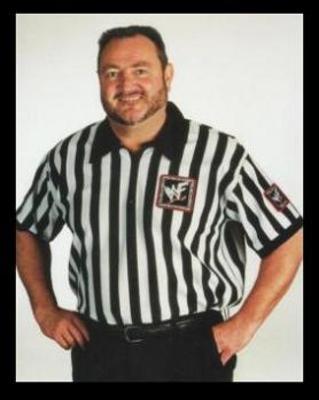
Tim White’s career as a WWE referee started in the late ’80s, and he was part of the first Summerslam ever.
In May 2002, at the Judgment Day Pay-Per-View, he took a very serious bump in the Hell in a Cell match between Chris Jericho & Triple H. He suffered a shoulder injury that kept him on the sidelines for several months.
At WrestleMania XX, not long after he returned in 2004, he re-injured his shoulder, putting an end to his referee career.
White eventually returned to a minor but distasteful on-screen role in 2005. He cut a series of vignettes in which he attempted unsuccessfully to commit suicide. He declared that the 2002 Hell In A Cell match ruined his life and had 14 Failed Suicide Attempts with a shotgun, a plastic bag on his head and even with a toaster while he was taking his bath, among others.
9: Mike Chioda
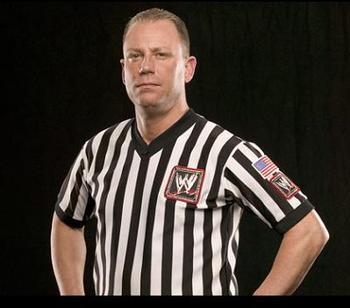
Mike Chioda debuted his referee career in 1989. He slowly climbed the ladder, officiating in mid-card matches at various big events such as Survivor Series & WrestleMania.
The first historical match he refereed was the WrestleMania 14 main event between Steve Austin & Shawn Michaels, so he can brag that he was in the middle of the action when the Attitude Era officially began.
He was also appointed as the official for the Hulk Hogan/The Rock encounter at WrestleMania 18.
Chioda’s continuous hard work finally paid when he became a head referee in 2002. The veteran ref is still employed by the WWE, and he has officiated many high-profile matches, such as Batista vs. Triple H at WrestleMania 21 and John Cena vs. Batista at Summerslam 2008. In addition, he was the one there when the ring collapsed when Brock Lesner applied on Big Show the most explosive Superplex on that famous episode of Smack Down! In 2003.
As have many of the other referees on this list, Chioda battled in a wrestling match. In 2001, he scored the pin when he teamed up with The Rock & Chris Jericho against The Dudley Boys & Nick Patrick, another referee.
8: Dave Hebner
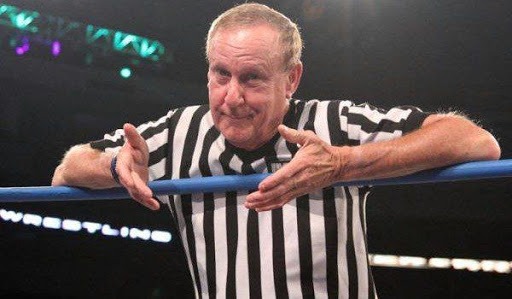
His most notable moment as a WWE referee was in the storyline involving his twin brother (Earl), who replaced him to screw Hulk Hogan in a match for the WWF Championship against Andre the Giant.
The plot took place on The Main Event on February 5, 1988 in front of 33 Million Viewers. Dave was locked in a closet, so Earl stole his spot as the referee. A rivalry was meant to be created on-screen between both referees, but it was dropped after Dave suffered a legit injury.
He officiated in many WrestleMania matches as well as in various other big cards from 1980 to 1990.
Among other classic matches, he was the referee in Randy Savage vs. Ricky Steamboat at WrestleMania III. He was also in the WrestleMania V main event between Randy Savage & Hulk Hogan.
7: Scott Armstrong
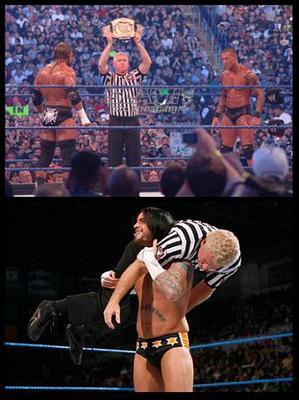
Armstrong is a former wrestler who had some success with some NWA territories in the early ’80s. He also wrestled for WCW, but he hung up his boots to become a referee for them in the early 2000s. He then joined TNA and was eventually hired by WWE in 2006.
He quickly became a senior referee and officiated many high-profile matches, including the WrestleMania 25 main event between Randy Orton & Triple H, who battled over the WWE Championship. Armstrong was also the referee in the classic Undertaker/Triple H encounter at WrestleMania 27.
At the 2009 Breaking Point Pay-Per-View, he played a role in a screw job angle to prevent The Undertaker from winning the World Heavyweight Championship against CM Punk. The Deadman had the match won with his Hell’s Gate Submission move, but the match was restarted after Teddy Long reminded the ref the move was banned. Then, a stunned Undertaker was put into CM Punk’s Anaconda Vice, but Armstrong quickly called for the bell despite The Phenom never actually submitting him.
In the following days, Armstrong declared on TV he only did what was asked by his boss. Then, the next month, on the October 23rd Episode of Smack Down, another screw job was planned by CM Punk, again with Armstrong as accomplice. The roles were reversed this time, with The Undertaker as the defending Champion, but the plan failed, and Punk fell to the reinstated Hell’s Gate.
The week after, CM Punk was granted a match against the poor referee, who was squashed in just a few minutes.
6: Dick Kroll
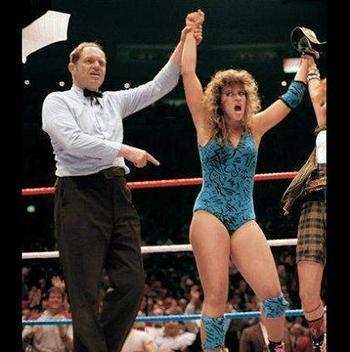
Dick Kroll started his career in 1960, and he became one of the most prominent referees in pro wrestling history.
If he didn’t make many waves, he could be called “Mr. Main Event” for being the referee in countless high-profile and historical matches.
He was assigned to almost all of the WWWF/WWF’s Madison Square Garden cards from 1960 to 1985, including for the first WrestleMania.
One of the highlights of his career is the bump he took in a contest between Pedro Morales & Blackjack Mulligan. He made a flip over the top rope to land on the concrete after he was accidentally hit by Mulligan.
The old school referee was the official in countless classics, including the 1971 upset when Ivan Koloff Ended Bruno Sammartino’s 2,803-Day Record Reign. He was also the referee in the legendary main event of “Showdown at Shea 1972” between Pedro Morales & Bruno Sammartino. He was there too during the controversial WWF Championship match between The Iron Sheik & Bob Backlund in 1983.
5: Joey Morella
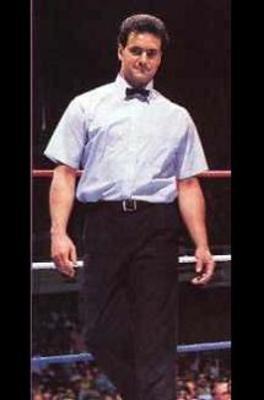
Beyond the fact that he is Gorilla Monsoon’s Son and that he died in a tragic car accident at the age of 30, Joey Morella will be remembered as a Top WWF Referee in the mid ’80s and in the early ’90s.
If the father and son’s relationship was never acknowledged on screen, Jesse Ventura emphasized his smack talk against Morella more than against any other referee. He constantly complained about slow counts or any other decision favoring the baby face wrestlers to pick on Monsoon.
Morella was the top referee at some point, and his hard work was rewarded by officiating the biggest match in pro wrestling history, the Andre/Hogan encounter at WrestleMania III.
He was also the referee for the Classic Intercontinental Championship match between Davey Boy Smith & Bret Hart at Summerslam 1992.
In what was one of his last appearances, he was a referee in the controversial 1994 Royal Rumble match won by both Lex Luger & Bret Hart.
4: Charles Robinson
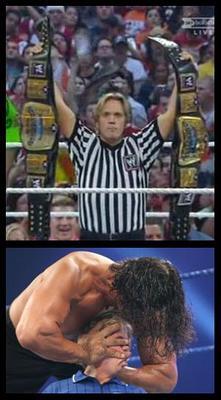
Robinson, who is still employed by the WWE, made his debut as a referee in WCW, and he became notorious by constantly helping Ric Flair & The Four Horsemen to win matches in 1999.
When the WWE bought WCW, he kept his job and sided with The Alliance when the WCW Invasion angle started, but he mostly remained impartial in the matches he officiated.
He didn’t take many notable accidental bumps, but he was on the receiving end of some memorable beatings. One of them was a Tombstone by The Undertaker, who was mad about a match decision in 2006. In 2008, after he ejected Chavo Guerrero from ringside during a match involving a member of La Familia, Robinson was also put into a squash match against The Great Khali as a punishment given by Vickie Guerrero.
Among other historical encounters he officiated, we can cite Shawn Michaels & Ric Flair’s retirement matches. In addition, he was the referee in several World Championship bouts, including The Undertaker vs. Batista at WrestleMania 23.
3: Jim Korderas
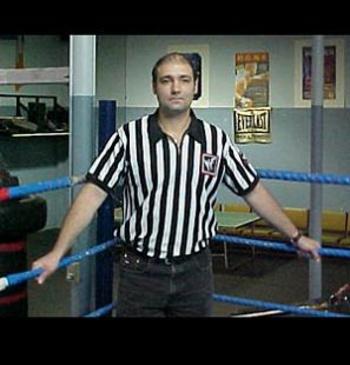
Jim Korderas was a top WWE referee from 1987 to 2009. He officiated on most of the biggest Pay-Per-Views, including at the inaugural Survivor Series and several installments of WrestleMania.
One of his most memorable moments was at WrestleMania IV, when he was legitimately knocked out by Jimmy Hart’s megaphone. In a match between The Honky Tonk Man & Brutus Beefcake, the storyline was to Kayfabe hit the referee with the megaphone in order to obtain a disqualification and keep the title on Honky Tonk Man.
On a more tragic note, he was the assigned referee for the match between Owen Hart & The Godfather when the Biggest In-Ring Tragedy in WWE History happened at Over the Edge 1999.
In late 1999, he had an important role in a scripted referees strike. In the angle, he was the only one who continued to do his job, and he was assaulted by his coworkers on strike after he crossed the picket line.
2: Danny Davis
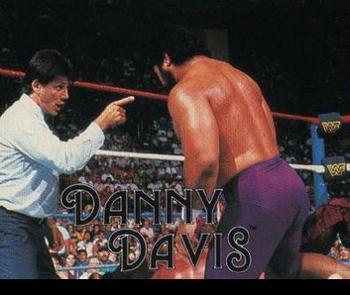
Danny Davis was a trained professional wrestler who was known as Mr. X, wrestling under a mask as a jobber. He wrestled on many occasions while he was pursuing his referee’s career.
As a referee, Davis was the epitome of the biased referee by favoring the heel characters, with quick counts against the baby faces and slow counts when a villain was down. He made it so obvious that, sometimes, he was attacked by the frustrated face wrestlers, which led to disqualification.
His actions generated a lot of heat, especially when he faked not seeing heel tactics such as the use of foreign objects or outside interference. He also never denied Gorilla Monsoon’s accusations of being corrupted. Monsoon, as the face commentator, often mentioned how Davis was rich for “just” a referee.
Davis’ biggest Kayfabe screw job was in a WWF Tag Team Championship Match when the Hart Foundation challenged the British Bulldogs for the title in January 1987. He allowed many illegal maneuvers to help the Hart Foundation to become the new Champions, and right after the match, he was fired as a referee by the WWF President.
“Dangerous” Danny Davis was then born, and he joined Jimmy Hart’s stable as a wrestler. He wore black and white striped pants in reference to his previous referee’s job, and the rest is history.
After his stint as wrestler, he came back to his officiating duties in 1989 but on probation for the first months of his “Second Chance.” To keep his job, he had to behave well in the ring and to drop his heel antics. After the probation storyline came to an end with no wave, he faded in the mass of other referees to eventually leave the WWF in 1995.
1: Earl Hebner
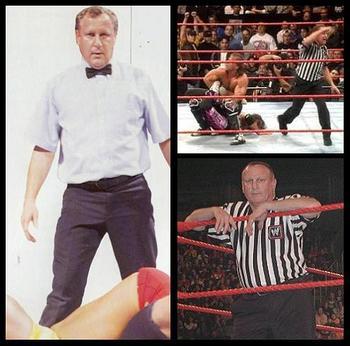
Who else than the infamous Earl Hebner could be No. 1 on such a list? For those who don’t know, he was the referee during the Montreal Screw Job in 1997.
There’s no need to elaborate on the topic, but it could be noticed that he was one of the few to know what was about to happen before the events and he was the first out of the arena afterwards.
As mentioned in Dave Hebner’s slide, Earl played a crucial role in the Andre vs. Hogan controversy. In what was his first match as a WWE referee, he was paid by Ted DiBiase to screw Hogan out of the WWF Championship. The match ended with a quick three-count with Hogan’s shoulders not down.
Following the Montreal Screw Job, Earl Hebner participated in various storylines, including one during the McMahon-Helmsley Era in which he was fired by Triple H then reinstated by Linda McMahon.
Hebner was also the leader of the referee’s strike angle in 1999; as the spokesman, he declared that the referees were tired of being brutalized by wrestlers and, in the end, they obtained the right to physically reply to assaults.
During the WCW Invasion Angle, he represented the WWF and he defeated rival referee Nick Patrick in a wrestling match.
As a reward for his loyalty from 1988 to 2005, he became a head referee and he officiated in many historical main events.
Among others, he was the referee in the “Winner Takes All” match at the 2001 Survivor Series to “save” the WWE and to conclude the Invasion angle.
The WWE has yet to induct a WWE Referee into its hall-less Hall of Fame, and that is in the words of the late, great Gorilla Monsoon, “a Miscarriage of Justice”. As fans of 80s pro-wrestling, we grew up with the likes of Earl Hebner & Joey Morella, who were the third, oft-abused men in the ring for some of the decade’s Classic Wrestling Matches. They would run around the ring, pass signals to wrestlers, and all the while be on the receiving end of a never-ending stream of abuse from the broadcasters who would constantly question their credentials for the job.
Along with being an integral part of the pro-wrestling show, the referee gives your average fan with an interest in joining the business a more realistic goal. It’s pretty unlikely that someone whose genetics point him towards the bench rather than the field will be able to become a pro-wrestler, no matter how many scraps he’s won on a mattress at the local city dump. Becoming a referee should be within the grasp of most mobile fans of the sport.
We have compiled the following as a tribute to the formerly bow-tied arbiters of justice in the squared circle and as a guide of key points to the job for aspiring refs:
- 1. The referee will never disqualify someone for not breaking on the count of five unless the wrestler plans to hold on to it for a full five minutes to injure his opponent and establish himself as a psychopath. There would be fewer limbs with which to hail cabs if such a policy were adopted in the UFC.
- 2. Unlike referees in other sports who often simply look like they could be replaced by just about anyone, in wrestling it is actually often the case: the pin-head stripers can be replaced at any juncture by a celebrity, old wrestler, or even some guy who runs into the ring from the stands to count three after they’ve been knocked out.
- 3. The ref will usually draw out the count of three like a reality show cliff-hanger unless a roll-up pinning combination is involved. When that happens, the ref will count the three as if the building is on fire and every second saved is precious.
- 4. Regardless of the severity of the impact, “Accidentally” being bumped will send the referee flying to the mat or outside the ring and knock him unconscious for as long as required for someone to pull something underhanded. His miraculous recovery will automatically coincide with the heel going for the pin.
- 5. On a related point, when a ref takes a fall, he will land in such a way that his vision of the chicanery going on behind him is obscured as he stands up. Also, he bizarrely chooses not to look around as he comes to, but rather stares straight ahead or at the mat, thus giving the villain a few extra seconds to do something dastardly. (A common scenario: the heel partner outside the ring, wails the baby-face with a chair, the heel goes in for the roll up.)
- 6. Every time someone puts on a hold like an abdominal stretch or some equally boring rest hold, the pro-wrestling referee will lean in with an intense focus that suggests he reckons this just might be the first time in the history of wrestling that someone will submit to such a hold.
- 7. While the ref is in heated discussions with a tag team partner outside the ring, the legal man can be stomped by Bloods, Crips, members of the audience, pepper-sprayed exposed to caustic industrial chemicals and left for dead. What the ref could possibly be discussing for this length of time is one of those “Suspension of Disbelief” wrestling mysteries best left untouched.
- 8. When wrestlers are battling on the outside of the ring and the ref begins the Count of 10, an epoch in human history will often pass before he completes the count in an important match. People will do Somersault Plancha into Pile-Drivers through tables, return to the dressing room to get their buddies’ impressions of the move, hold a press conference detailing the media’s exaggerated impressions of steroids in pro wrestling… Then they’ll stop for a late-night snack, before finally getting gas and returning to the ring. The ref will be at 4.
- 9. The ref will invariably fail to see that the bad guy has his legs stretched to the ring rope for added leverage, even when the heel manager or tag team partner is latched onto them and swinging about. Worse, rather than looking at the video footage afterward and ruing ever having fallen for such a ploy, the ref will miss this night after night, allowing the heel to cheat with impunity.
- 10. If the ref is in any way athletic or larger than, say, Jimmy Mouth of the South Hart, he will probably make a biased call in a match and find himself embroiled in the classic “Heel Referee” skit that pro-wrestling likes to trot out whenever the creative well runs dry. (The greatest of these was, of course, Dangerous Danny Davis).
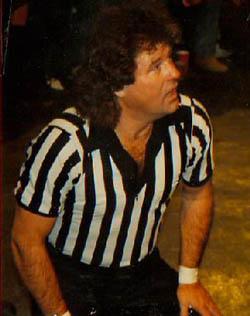
The Internet is full of wrestling fans who think they know it all, or desire to know it all. Yet there is little discussion of referees. In fact, I would argue that the role of a professional wrestling referee is both misunderstood and not fully appreciated. Let me explain.
As someone who studied the wrestling business from without and within for a long period of years and has worked in the ring as a referee with any number of the best in the business for many of those years, I have formed some definitive ideas about what a referee is and should be about in regards to professional wrestling.
It was my life and my passion to be the best I could be and to know every minute detail of what that takes. I could never relay all of that without writing a lengthy book, but in this relatively short space I am going to attempt to bring some light to those who might not really understand the role of the referee in pro wrestling.
While I realize my days as referee in the business are representative of an era that has changed and the referee’s role with it, I am speaking from a point of view of how I truly believe things should be and once were, for the most part. Though many fell short of being the complete package, the ideas that are noted here represent what I believe should be and/or should have been the goal of a pro wrestling referee.
First of all, I will tell you what a Professional Wrestling Referee Is Not.
He is NOT the same thing as a referee or official in any other competitive sport. While his purpose may appear to be similar, ideally, he should have a much more involved role as he is and should be a part of the package that tells the story and gains the goal of what the wrestlers and those who are involved in creative ideas are attempting to accomplish. He is NOT a guy whose presence should be obvious “Only” when he is involved in a spot or a finish.
He should NOT be invisible or a non-entity as some seem to think and as often expressed about referees and officials in other sports. While he should not overshadow the wrestlers who are the ones who should mostly be the focal point, he has a role as somewhat of a “Supporting Actor,” in that his body language, facial expressions and knowledge of positioning, timing and other factors should enhance the wrestlers’ goals — whatever that may be — in relaying to the fans what is happening in the ring. You cannot do this by becoming an invisible participant or having little or no interaction with the wrestlers. That may be fine, and even desirable, for a boxing referee or a football official, but in wrestling, which depends on creating a visual picture that tells a story to the fans who are watching, a professional wrestling referee has to be a part of that picture if it is to be complete and believable.
The unfortunate truth is, in many cases, the guy you see in the ring as referee is someone who will work cheap or for nothing; a guy the promoter knows, a relative or someone willing to do other chores in order to get to be in the ring. Don’t get me wrong, I know a lot of capable referees have traditionally handled other jobs in wrestling promotions, but all too often the guy you see in the ring wearing a striped shirt is anything but a true professional who really knows and is capable of the nuances required to do the job correctly and fully.
Many don’t give the referee a second thought and a surprising number of guys who are and have been in the business for years don’t really understand or appreciate the role. Let it be understood that a true professional wrestling referee is NOT one of these stand-ins who are hardly capable of making a three count properly, much less perform the intricate, complicated and often subtle duties required to do that job as it should be done. Frankly, I refuse to work for someone who does not understand and appreciate what my experience, skills and knowledge can do to make their shows and promotions better. You get what you pay (or don’t pay) for in most cases.
There are many things an ideal and complete pro wrestling referee should be. But there are just as many things that are misunderstood by the general public, and even many who have been in the business that haven’t bothered to really study the role of the referee and understand all it can do to make wrestlers better and matches and angles more believable and logical.
You may be able to have a good match without a great referee, but a great referee can make a good match a great one if he knows what he is doing and how to interact and respond to the wrestlers and the events that happen in the ring. The pros that understand this, know how to utilize the referee and react to him in ways that only enhances their personas and skills. Unfortunately, this is becoming a lost art and most simply have no idea these days how important this element can be.
Most of what a referee does in the ring that helps a match are subtle things, such as the aforementioned facial expressions, positioning and body language. Sometimes it’s similar to a pantomime in which you are trying to relay to the fan that something such as a hold is having an effect. A skilled referee makes the contest feel real and appear to be more competitive. He understands the concept of timing that allows wrestlers to get “real heat” without making a fool of himself and while appearing to be attempting to enforce the rules and keeping things fair.
Sometimes, this means a referee has to make the wrestlers work a bit harder at outfoxing him, but if done properly and with cooperation, it makes the match much more believable and does so without destroying the integrity of the referee’s role. It also keeps the fans involved and interested in what and why something is happening and makes them feel a passion one way or the other for the participants. They feel sorry for the guy being cheated and hate the guy doing the cheating and the fact that he’s finding a way to get away with it behind a referee’s back who is “Obviously” diligent in trying to keep things fair.
All this is a fundamental for attaining “Real Heat” and placing it on the person intended and not the referee, who is not the guy you want the heat on. All too often, in some promotions, the guys doing the refereeing are wanting to be either a “Heel” or a “Baby Face.” That is not the role of a referee. He should be, in a fan’s mind, solely an impartial rule enforcer. Only in the case of an angle that has a purpose should a referee be anything other than that.
I have long been known as one to make wrestlers work hard for heat. I’ve endured some friendly ribbing from guys who really know my purpose and want to give me a hard time for “giving them a hard time.” But I did not do that to make their jobs more difficult or to get myself over. I did it with the purpose of making the match as logical and believable as possible and all the while protecting my status as a rule enforcer. I would work with guys and bend over backward to help them get heat, but I wanted them to get “Real Heat” — and Not at my expense.
Getting “Real Heat” and making sure it is placed upon the right person makes such a big difference in how a professional match is viewed by fans. The lack of “Real Heat” these days has reduced the typical wrestling performance to nothing more than meaningless skits full of cheap heat and rules that are never really enforced consistently or believably. That’s not even getting into the criticism of most matches being “Spot Fest” oriented affairs.
Getting heat with logic and believability is what carried the wrestling business through many decades of existence and what most of us who long for a more traditional approach loved about the business. That was what created its aura that has sustained our interest in it over the years.
It all begins with “Heat” and the issues and passion that this creates in the eyes of the fan. This is something that is best accomplished with the cooperation between both skilled wrestlers and likewise, skilled referees. One without the other makes for a much less impressive product.
I believe it is important for a referee to understand the business in the same way a wrestler should. This includes the reasons and logic for what happens in the ring or the psychology of how a match is laid out and performed, the holds and how they are applied and their intended effect. Having that knowledge along with the overall instincts that help you know how to react and interact with the others in the ring makes for a more realistic contest. Some of the factors are learned, some come more readily because of natural abilities or understanding. But all are important factors in how a referee enhances a wrestling match and the guys who perform them.
I could never list or mention all the instances that those basic skills and knowledge have helped bail me and the guys I worked with out of. Only experience can give you what you need to handle certain things that might happen in the ring and I don’t believe you ever stop learning or seeing new things or situations to deal with
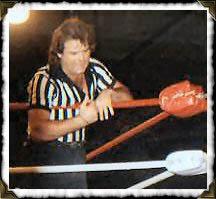
I started studying professional wrestling from a fan’s point of view, as most of us do, but over a period of time I recognized the craft involved and the skills it took to accomplish the intended goals long before I ever stepped in a ring.
I never fully comprehended until I became a part of the business and my learning and understanding of it never stopped.
I have always looked at the business and my role in it as referee from a creative standpoint. I have always believed the referee’s role should be inclusive and detailed. Without really studying all aspects and understanding it from all points of reference, you cannot be as complete a referee as possible and you cannot best serve your purpose as someone who makes things look and feel better for the sake of the wrestlers and the eye of the fan.
You don’t always accomplish this as well as you would like, but with other skilled and experienced guys in the ring with you, and when you know you have performed a well-paced and logically drawn match, it is as much a work of art as any other performance in any field of entertainment or sport. And when this happens, it is a result of a concerted effort by all in the ring, including the referee. It certainly doesn’t get that sort of glory or view from the general public, but wrestling fans, even when they have no idea how it was accomplished, can see it and appreciate it for that.
In some cases, when working with young or green guys, a referee can be a valuable source of stability and knowledge for guys trying hard to create a good match in the ring and on the fly. I have called more matches than I can count from start to finish. I have found, over time, the young guys will gravitate to you, ask your advice and want to work with you because they feel confident you can help them get through any tough spot or mistake; that you will know where to go from any point in the match that makes sense and helps them get through without making themselves look foolish. You become sort of a teacher in the ring in those situations and believe me, being able to do this comes in handy many times over. But you can’t do this if you don’t have an understanding and feel for what needs to happen in a match — and why.
I have, on many occasions, suggested spots and helped even very experienced wrestlers out of tight spots when things might not have gone as they had planned or when situations changed because of a missed spot, injury or someone simply forgetting what should come next or maybe even a finish.
At other times, I might even suggest spots or moves when I had a “Feel” for something that might work in a certain situation, even during the flow of a match regardless whether things were going right or not. When I would do that, the wrestlers had the option of doing what I suggested or something else. It never bothered me either way when it was experienced guys I was working with, but there have been many times that my suggestions were taken and things turned out even better because I had the ability and knowledge to see or feel something, much like the wrestlers themselves. Things don’t always go as planned in the ring and things happen on occasion that changes everything intended. A good, skilled referee can be a huge asset when those things come about.
Another factor that I believe helps a referee be the complete package is athletic ability. Now, I know a lot of good and very capable referees have not been particularly athletic, but being so is of great benefit when it comes to timing and maneuvering in the ring. It’s very helpful to be athletic when you need to make a quick move to get out of the way or to get to a point to make a count. It also comes in handy if you are required to “Take a Bump” or any other physical move, even simply chasing the wrestlers around the ring or sometimes around the arena. If a referee isn’t an athlete, then he should, at least, attempt to maintain some degree of condition. It’s amazing how much energy you can use just staying out of the way or trying to keep up with some of those guys.
Being athletic, or at least having the look of being in condition, is also a help in appearing to have a presence in the ring of a guy who is capable of maintaining control to a reasonable point. This doesn’t mean “Showing Up” the wrestlers, but having a look of being physically capable to be believable in controlling situations that require some physical contact with the wrestlers or standing up to them on occasion is a plus for any referee. In the fan’s eye, if you are capable of handling tough situations, they tend to have more faith in you and trust you are capable of doing your job.
I’m not one of these guys who believes a referee should never “Touch” a wrestler. Quite the contrary, in fact. The referee, if he is to do his job believably, has to occasionally be a bit forceful and that sometimes means pulling, pushing, prying and otherwise being in physical contact with the wrestlers. The wrestlers who understand the value of this know how to use it to their benefit and to help them get over and get even more heat. It also makes the referee’s effort to maintain control much more believable and often more palatable to the fans.
As an example, “Killer” Tim Brooks used to love for me to be physical with him in the right situations, even sometimes pulling him off an opponent by his hair if necessary, to make the point that he is one minded in his aggressiveness and even a bit out of control. In Killer’s mind, I wasn’t “Showing Him Up,” I was making him look even more difficult to handle than his colleagues. My being required to take those desperate measures to get his attention only enhanced his persona as a badass heel and helped him get even more heat than he could by simply ignoring my pleas to break it up. If he came at me for pulling his hair — which is often what he would do — all I had to do was point at my shirt and remind him who he was threatening. He would most always back off, appearing to fear disqualification or fine. That respect, in itself, whether given begrudgingly or not is an important factor in the way a fan believes what is happening and whether or not the rules and the referee mean anything beyond eye candy. But it takes a cooperative effort to make that happen.
As I said before, the guys who really understood how to use and work with a referee had the advantage of everything a good referee could give him, which is a lot if it’s done properly. These guys who feel a referee should never touch them are typically too full of themselves to realize how much that interaction could help them if they could see beyond their own egos.
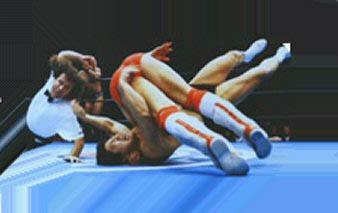
Some things are simply necessary, yet so basic, such as a consistent and rhythmic count that remains the same regardless if it’s just a false finish or the real thing. Nothing is more obvious to fans and more irritating to me than seeing a referee stooge off finishes and other points of a match by changing a count or doing something different than he might do when the “real” finish is coming up. Not only the factor of stooging off, but the consistency of a count helps the wrestlers keep better tabs on where the count is and how it is going to come in order to time either a kick out or another move. When a referee is inconsistent it becomes a guessing game for the wrestlers. A strong, vocal and rhythmic count that remains the same throughout the match is an important part of being a believable and complete referee. But any habit a referee might develop that does anything to distract or lessen the effect of a match, no matter at which point it is done, is something that should be corrected and replaced with more believable traits. Simply put, you do anything and everything you would believe a guy who’s trying to be fair and maintain the rules would do — at all times in a match.
I was always pretty vocal in my matches. First of all, it adds to the match’s believability when the referee is vocalizing his commands and admonishments. The fans hear this and it feels right to them. There are times when other vocalized interaction with the wrestlers makes for a more “Real” feel and those are dependent on the wrestler’s characteristics or other factors that might make that interaction or statements add something to the match. Sometimes these may be very serious, sometimes even a bit comical, but as long as they sound “real” and have some meaning, they can be a valuable part of getting the match and the wrestler over.
Other times I might be vocal to cover up something or give the wrestlers a chance to interact while I am appearing to be either asking a guy if he wants to “Give Up” or checking a hold, etc. This is when some bit of pantomime comes in handy. We may be in a hold in which the guys are catching their breath for a few seconds and possibly calling something; I could be moving about, checking the hold, making gestures with my arms and hands or any other thing that keeps things going and interesting while there is really not much going on wrestling wise. At some times, it might be that I am communicating something else to the wrestlers, such as time left (in a TV situation), making a suggestion, or any other thing that might need to be passed along.
Sometimes when I’d appear to be admonishing a wrestler for breaking a rule, I might be doing the same sort of things mentioned above or passing along something from his opponent, all the time my facial expressions are saying one thing and my words another. The fans never know and it always appears I am doing my job.
One of my most proud moments in the business came in a dark, secluded area of the arena on the Fairgrounds in Amarillo, Texas. I was standing there alone, getting my thoughts together for the upcoming matches that I had traveled to work at the request of my old friend, Dick Murdoch, who was promoting the event. As I was standing there, I heard Dick walk up and speak with his unmistakable drawl. He greeted me and said, “I just wanted to thank you for making it out here for me” and then after a couple other comments, he said, “I wanted to tell you that I really think you’re the best in the business and I appreciate the way you work. That’s why I wanted you here for my show.” He went on to explain that he particularly liked the fact that I enforced the rules regardless of whether it was a heel or baby face who might have broken them and did so with equal emotion and effort regardless their stature. Those are things I was very much aware of and tried to do because I knew the importance of appearing to be a guy whose job was to enforce rules and to do it in a way that was unmistakably believable and uniform.
That was about a month before Dick died, and I have always remembered those sentiments as being very special to me for two reasons: One, they came from a guy I respected and knew to be a straight shooter who seldom dealt out compliments and didn’t pull his punches when it came to his opinions. Secondly, because it was the last night, I got to work with a guy I consider to be one of the best ever in the business. I got to spend a bit more time with him later that night at his old, worn-out bar, doing our best to rid it of all the Coors Light that might be anywhere around. But, I have always held to that uncharacteristic moment from Dicky as validation of work I had tried hard to make as good as anyone could do it and my beliefs that I had a responsibility in the ring to enhance the believability and carry on the traditions of a business guys like Dick had busted their asses to create and maintain over the years. It is a responsibility and legacy I took very seriously, just as I took my job as referee and all that it meant.
The truth is, being famous or well-known was not my goal. Though some notoriety certainly has been nice, knowing the guys I worked with in the ring and dealt with in the dressing rooms and booking rooms trusted my skills and knowledge is really what makes me feel comfortable about my part in the wrestling business and the quality of the body of work I was able to accomplish. I believe it is because I have always had strong convictions about my role as a referee that I have enjoyed so many good relationships and experiences over the years in the professional wrestling business. Of that, I am proud.
I believe that the lack of rules and the lack of consistent enforcement of them by guys who knew how to do that is one of the most important factors in the decline of the way many of us see the business these days. Simply enforcing rules would change everything. It would create the need for guys to learn skills to get real heat and it would result in those guys becoming much more believable and more psychologically sound. That alone would be a tremendous “Fix” for what ails the wrestling business, in my opinion. It sounds simple, but of course, it is not. But that factor would certainly make a difference if the powers that be could show the patience and creativity needed to allow this to become the way things worked again.
There may never be a time again when the skills and psychologically sound work that was mostly common in days gone by are the norm in the professional wrestling business. I will never believe that those were not the best times, though, and I will never be able to fully accept a wrestling product in which these traits are not taught, required and carried through with as much believability and logic as possible. I always felt a sense of pride that as a referee, I could stand in the ring with two skilled wrestlers, knowing that together, we had a chance to create something that is based on a craft and art-form that results in a well-paced rollercoaster of passion and leads the fans watching to a logical, if not always satisfying, conclusion that they can really believe in.
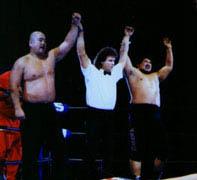
James Beard Raises the Hands of Kendo Nagasaki & Yoshiaki Yatsu.
In my case, I was lucky to find a few places fit for a guy who believed in the importance of having a really good referee and what that entailed. I have always appreciated those places and the guys who trusted me to be that. In that role, I tried to be someone who helped those guys get to where they were going, even if most folks and fans never understood how I did it or appreciated my role in it all. I know, because I did everything I could to be someone those uniquely skilled athletes could trust to be a part of their matches and count on to do what was needed to reach a common goal.
While I cannot begin, here, to fully explain all a referee does or can do, this is a synopsis of some things I believe to be truly important in being a complete professional wrestling referee:
- Knowledge: Have a grasp of the basic rules, understand psychology and the fundamentals of how a wrestling match should be put together and what the role of a referee is within them. Have a basic knowledge and understanding of how holds work and their intended effect. In my opinion, a good referee, while he might not have the skills and ability to perform all these things, should basically be as knowledgeable of all the nuances involved as the guys who work with him in the ring.
- Develop or Enhance Your Instincts: Understand timing in regards to holds and moves and have a grasp of the proper pacing of a match. Know when and how to do what you do. Just knowing how to do them is not enough -- knowing when is just as important.
- Be in Shape: If you are naturally athletic, great! If not, at least condition yourself and take some pride in your appearance. You may not be the star, but you have a responsibility to look like you can do the job.
- Be Technically Correct: Make consistent and rhythmic counts that the wrestlers can depend on. Know the rules and be consistent in applying them and do so regardless whether it is a popular wrestler or heel you are dealing with. Know positioning, be at the right places at the right times. React properly and believably to all circumstances.
- Learn the Subtleties: Know how your body language, gestures and facial expressions can help enhance a match and understand when and how to use them. Know how and when to assist the wrestlers in communicating with each other and how to make it appear to be something else you are doing. Overall, understand how the little things help build an image in the eye of the fans and what you can do to enhance that and make things "feel real."
- Be Confident: Appearing to be a meek or weak rule enforcer does not help enhance a match and does not help get the wrestlers over. All this does is make you look foolish. Remember, the wrestlers are the ones who should be getting the heat and mostly being the focal point of the match. If you allow things to go, that makes you look like the fool and the fans get mad at you, not the guy they should be getting mad at. I realize some wrestlers, bookers and guys in charge do not understand this any better than most of you, but the fact is, if they don't allow you to be a strong and consistent rule enforcer who always appears to be doing his best to keep things fair, then they simply don't know what they are doing and how to place the heat where it belongs. Sadly, this is all too common in the business these days and even at the upper levels they don't seem to really grasp this fact.
There are so many other things that could be listed, but most are things learned through experience and over time. I hope those things I’ve touched on give some insight to an overlooked and misunderstood, yet very important factor and role within the professional wrestling business.
There’s an old saying some of the guys who knew the difference used to repeat when talking about working with a good referee — It takes three of us to do it right. So True!
Former WWE referee shares a story about a rib that was played on him, why he feels it’s a good thing he was fired by the company.
The guys are joined by Wes Adams, who is back wrestling after being a referee in WWE for the last few years. Wes tells the guys he was a wrestler first from 2001 until 2007.
Wes thinks WWE asked him to ref because he was average looking, had no tattoos or long hair, and didn’t stand out. He says that in WWE, referees get a lot of respect which is different from the Indies where you are just another guy.
Some calls come in. Jason asks if Wes has any Mike Knox. Stories. Wes tells the story of him and Mike on a flight. They were messing and Mike grabbed Wes’s bicep and said it was nice, all the time a woman is watching. Mike asks her did she to grab his bicep. She was scared of him from then on.
A question from the forums asks did Wes ever work overseas. Wes said he worked a European Tour which was fun, the crowd is very hot overseas and he liked that.
William called in and asked what was Vince McMahon was like. Wes said he didn’t see him much but didn’t have any problems with him. Wes was also asked who the best performer on Smack is down, Wes singled out Edge for his hard work and great in ring skills and also The Undertaker & Great Kahli, who he says is underrated as a performer.
Wes was asked how tough is it being a referee on a scale of 1 to 10. Wes said 10. He said it’s very tough you might have to wrestler four matches a night and people don’t realize some refs work as part of the ring crew like Charles Robinson, Jack Doane, & Chad Patton so you have to be up early setting up the ring and up late taking it down.
Jack asks about the infamous match where Wes called an early finish. He said John Morrison was legit knocked out and he didn’t realize it till after. If he had known, he would have thrown up the “X” sign for an injured wrestler to get help. Jack asked if this is why he was fired. Wes tells him maybe. He was the greenest ref there by far, but doesn’t think that’s why he was fired.
Wes was asked about any rib stories and tells one where he is about to ref a match. Finlay was the agent for it and is in his earpiece giving instructions. Jerry Brisco gets on it and tells Wes to get out of the ring. Wes obliged. Finlay yelled at him to get back in, then Jerry tells him to get out again. This went on for several minutes and Wes could hear Jerry laughing. After the match he gets back and everyone was laughing except for Finlay who was pissed at him.
Wes feels that being fired by WWE is a good thing because he can now wrestle again. He thanked the fans for all their support and emails, and thanks the guys for getting him on the show.
How to Be a WWE Referee:
Refereeing a WWE match is definitely not the same as officiating a sporting event. Pro wrestling is obviously scripted athletic entertainment, as the moves and holds that the performers use are predetermined. Regardless, getting the chance to become a WWE referee is not much different than earning the opportunity to call penalties in the NFL: You must pay your dues for years developing your craft, and with a little luck, you could be refereeing a match in front of thousands of people on live TV.
Find & Attend a Pro Wrestling School:
Search the Internet and find a wrestling school’s website or phone number. There are schools spread across the United States & Canada. Many of them are owned or trained by reputable pro wrestlers, such as Workforce Fitness Performance Center & Killer Kowalski’s Pro Wrestling School.
Save up money before registering for any classes. Some schools can be costly; Florida Championship Wrestling, the official developmental territory for WWE, is expensive.
Inform the training staff of your wrestling experience level. If you have little or no experience, the training techniques used will be different than those used for a seasoned performer.
Train as much as you can. Learn how to put together and take down the wrestling ring. Work on promotions for live shows. Gather as much knowledge as possible. Not only will it help in your development, but it would show your trainers that you are serious about making this a career.
Get in Shape:
Pro wrestling referees will at times get into similar physical altercations as the performers themselves if the match requires it. Lots of cardiovascular conditioning is crucial to keep up with the action. Strength-training is necessary as well, as you might be asked to perform moves yourself.
Maintain a healthy diet. Eating correctly is just as important in wrestling as it would be for a sports athlete. Not getting the right foods in your system would make you weak and sluggish. High-protein, low-fat diets are definitely recommended, especially since you would also be working out to get in shape.
Get plenty of sleep. With the toll your body is taking from the training and working out, you are going to need to re-energize it.
Make a Videotape & Send it to WWE:
Make a videotape of your in-ring performances. Unless you are in FCW, there would be little-to-nothing that WWE would know about you. If your training school puts on live events, it’s likely that it would have videotapes of its shows.
Get the tape into WWE’s hands. It’s very possible that one of your trainers or the school’s owner/promoter knows someone that is or was affiliated with WWE. Networking is absolutely necessary to get a worldwide entertainment company like WWE to notice your work.
Give them time to come to a decision. WWE gets bombarded with applications from aspiring performers all the time. If it likes what it sees on the tape, it will definitely get in contact with you.
WWE Referee Bios
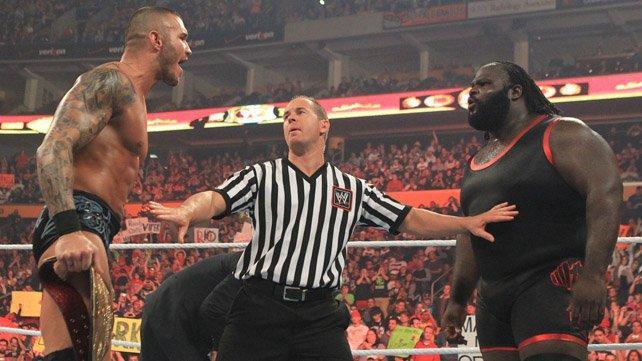
Meet the WWE Referees
Have you ever restrained Randy Orton in the middle of the ring as The Viper stalks his prey, or banished Triple H to the backstage area for meddling in the action at ringside? Ever ordered Bret “Hit Man” Hart to keep fighting Shawn Michaels in a WWE Iron Man Match after time expires, or made Chris Jericho listen to reason after reversing a decision at Y2J’s expense?
As the brave soul charged with the responsibility of maintaining order in the WWE ring, the referee must call every moment down the middle despite the looming presence of any Superstar. The referee represents the forgotten participant of every match, as someone needs to count the pin falls, acknowledge the submissions, and call fair or foul on every maneuver.
It’s a dirty job, but somebody has to do it. And the officials on the following pages do it daily by relying upon their extensive training and expertise to demonstrate what it takes to be a referee in WWE.
Chad Patton
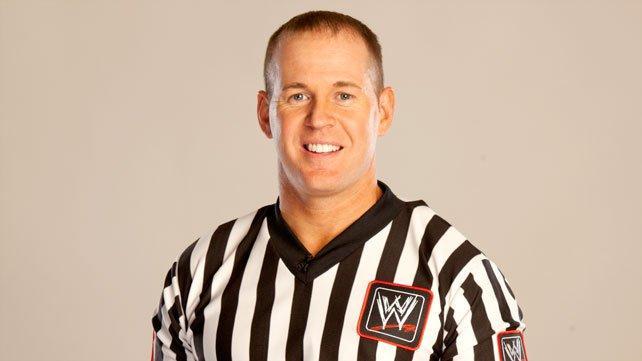
After being introduced to the WWE family by a friend, Jack Doan, Chad Patton began his career.
Patton would help set up the ring for WWE events in the Midwest on his days off and on weekends. Soon, officials took note of his hard work and put him in charge of setting up the stage. Eventually, it became a full-time job for Patton. At one point, he was asked to try his hand at ring announcing, which Patton admits he was terrible at. But he was thrilled when a referee position became available. He went on to win that position and has been a WWE referee ever since.
Patton cites two matches – Steve Blackman vs. Tiger Ali Singh and his first Cage Match, pitting The Rock against Al Snow – as memorable moments of his officiating career.
When he’s not calling matches, Patton likes to stay active, working out and helping coach his son, Chase’s, sports teams. He is happily married to his wife, Stacy.
Charles Robinson
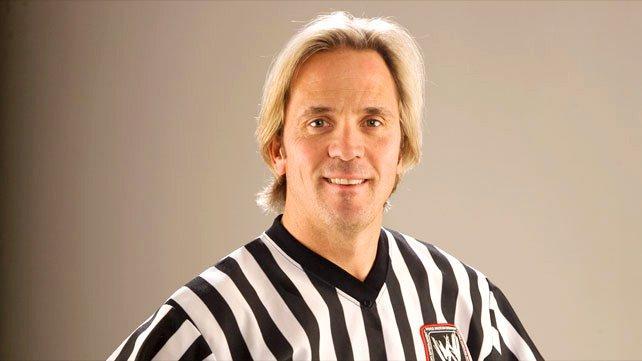
Charles Robinson got his start as a referee for a small independent promotion in Charlotte, N.C., before getting called up to work for Ted Turner’s WCW in the late 90’s. First officiating a match between Chris Taylor and a local talent as a tryout, it wasn’t long before Robinson was overseeing some of the most memorable showdowns in the organization’s history, including Goldberg vs. Hulk Hogan for the WCW Championship at the Georgia Dome and a First Blood Match between Rick Flair & Hulk Hogan.
Robinson also has the rare distinction of tag-teaming with the “Nature Boy,” Ric Flair, which Robinson cites as the highlight of his career. Robinson, like many other North Carolina natives, grew up idolizing the 16-Time World Champion and at one point was referred to as “Lil’ Natch.”
Robinson came to work for WWE shortly after WCW was bought out by WWE in 2001 and refereed, among other matches, the WrestleMania X8 classic between The Undertaker & Ric Flair.
A lover of his job, Robinson can’t think of a better way to earn a living than by being a WWE referee. Outside of the ring, he enjoys spending time with his daughter, Jessica, with whom he enjoys skiing and riding horses.
John Cone
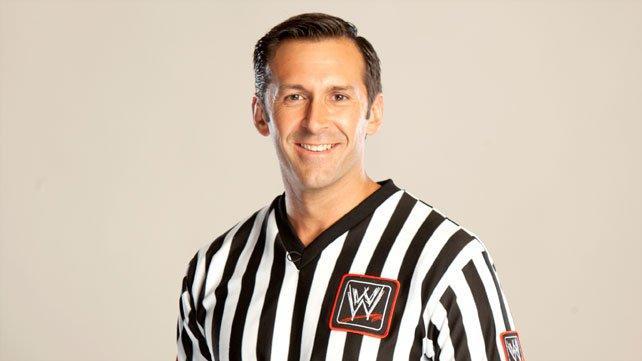
Referee John Cone got his start in the Ohio River Valley, working for Harley Race from 1999 to 2006, where he happened to get noticed by a WWE Official who was in attendance. Cone started working matches on ECW & Smack Down before moving on to Raw. His most memorable moment, he says, is when he officiated a boxing match between former Heavyweight Champion Evander Holyfield & Superstar Matt Hardy in The Most Famous Arena in the World, Madison Square Garden.
Outside of the ring, Cone runs Donut King, a Kansas City, MO-, based doughnut shop, with his wife Lauren. Speaking of the differences between his two occupations, Cone says, “Making doughnuts, you have to start in the middle of the night and end early in the morning. With sports entertainment, on the other hand, it could start early in the morning, but it ends in the middle of the night.”
Mike Chioda
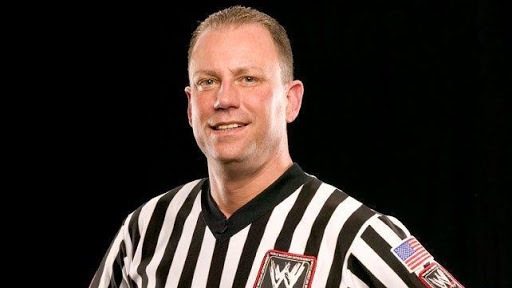
Referee Mike Chioda has been a part of the WWE family for 20 years and has been a referee for the past 15. He started out working for late WWE Hall of Famer Gorilla Monsoon, selling event programs and setting up the ring every night. Around age 19, Chioda was approached by WWE Hall of Famer Chief Jay Strongbow, who wanted him to train as a referee.
The first match Chioda ever worked was between the Brooklyn Brawler & Barry Horowitz, but he has since gone on to oversee some of the most memorable moments in WWE History. Among his favorites are Brock Lesner’s Superplex to Big Show on Smack Down, which collapsed the ring. There’s also Triple H vs. Batista at WrestleMania 21, “Stone Cold” Steve Austin vs. Shawn Michaels at WrestleMania XIV & The Rock vs. Hulk Hogan at WrestleMania X8.
Rod Zapata
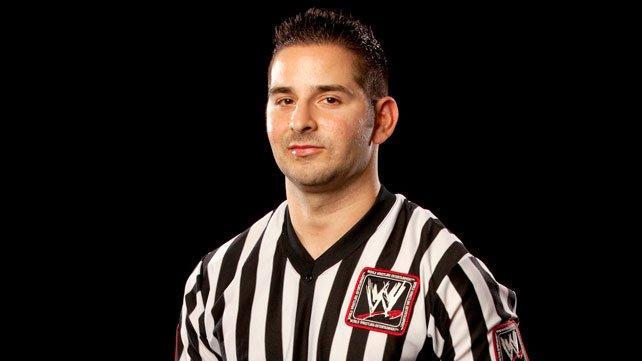
Rod Zapata began his career as a WWE Official in 2010. The Las Vegas native joined WWE after working for Florida Championship Wrestling, WWE’s developmental promotion.
Ryan Tran
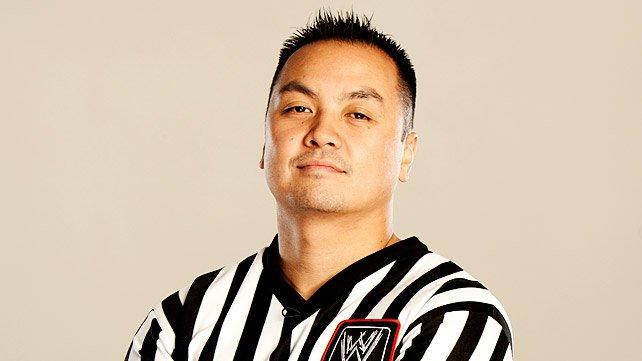
Ryan Tran began his career as a WWE Official in 2010, calling matches for NXT before getting sent up to Raw in February, 2012. Born in Malaysia, Tran spent his childhood in Hayward, Calif., where the future official grew up idolizing WWE Hall of Famer Ricky Steamboat, and initially trained under legendary WWE Hall of Famer Harley Race with the goal of becoming a WWE Superstar himself. However, when WWE offered him a position as a referee, he jumped at the opportunity.
Tran cites the Triple Threat Tag Team Match between Cody Rhodes & Goldust, The Shield’s Roman Reigns & Seth Rollins and The Usos for the WWE Tag Team Championships at Hell in a Cell 2013 as the most memorable contest he’s officiated.
When not in the ring, Tran is an avid sports fan, rooting for the Oakland Raiders and the San Francisco Giants. He also enjoys collecting McFarlane Sports action figures.
20 Fascinating Facts You Didn’t Know About WWE Referees
WWE referees are perhaps the most invisible, yet important members of the WWE roster. Referees jobs are the quite possibly the most essential; given that they are the officials that hold up the rules that are governed by WWE, even though many times referees have been known to overrule superstar’s judgements when calling them in the ring. They are the men whose names you forget but faces you recall; they are the ones that WWE put in some of the most dangerous positions all in the name of entertainment.
From Earl Hebner in the 1990s to NXT’s latest acquisition Drake Younger, referees have played a major part in some of WWE’s biggest and most famous storylines over the past few three decades. From The Montreal Screw Job back in 1997 to this year’s blockbuster feud between Brock Lesner & The Undertaker, WWE’s officials always have a part to play, even if you didn’t know they were doing it. Sometimes the official can be more important than the wrestlers involved in the actual match and below are some of the reasons why.
The following is a list of fascinating facts that you perhaps didn’t know about WWE’s men in black and white stripes.
20: The Timekeeper Can Overrule the Referee
This is the newest interesting fact and was seen during WWE’s Summerslam event when the referee was watching the action and failed to notice The Undertaker tapping. Instead the timekeeper, who was sitting at ringside a few inches away from the ring, saw The Phenom tap and decided to start ringing the bell without including the official in the decision.
This has never been done before and is widely considered one of the most bizarre endings to a WWE match, especially given that this match was proclaimed to be “The Match Too Big for WrestleMania” by Lesner’s advocate, Paul Heyman.
19: Brad Maddox Made His WWE Debut as a Referee
Former RAW General Manager Brad Maddox made his WWE debut as an official that was brought in to play a part in the CM Punk/Ryback storyline. Maddox had already refereed matches for WWE before Hell in Cell in 2012, but it was during this main event that he was brought to the WWE Universe’s attention and it was thought that he was working for CM Punk.
The Shield debuted not long after and the heat adjusted onto the shoulders of the trio, whilst Maddox then went on to become General Manager of Raw and, towards the end of his WWE career, he became known as Joshua Kingsley.
18: Sometimes an Official Doesn’t Know the Outcome
In the days of Internet culture and the Internet Wrestling Community, it has become widely known that WWE is scripted. The thought is that the superstars and the referee always know the outcome of the match before they set foot in the ring, but this is not always the case.
The famous example of this is during the Brock Lesner/Undertaker match from WrestleMania XXX, as Chad Patton was officiating when The Streak finally came to an end and it was confirmed following the event that Patton was not informed of the outcome beforehand, he was just told to count when needed. This is a rare occasion and because of the amount of leaks around WWE and the fact that The Streak played such a big part in that year’s WrestleMania, WWE couldn’t afford to allow anyone else into the loop.
17: Drake Younger was a Famous Independent Wrestler
Current NXT official Drake Younger was a famous independent wrestler before he was signed by WWE development team. After having some high-octane hardcore matches with the likes of Jon Moxley (Dean Ambrose), Younger was hired by WWE and instead was given the opportunity to officiate. Younger has trained as a professional wrestler, so he could make the switch at any time.
Younger has mentioned many times in interviews that he is happy working as a referee for WWE because he has less chance of being injured and is still able to be a part of the action inside the ring.
16: Mike Chioda Has Been a Part of WWE Since 1989
Senior WWE Official Mike Chioda has been a part of the company for longer than many of the current main roster superstars. The Raw referee has even been in WWE longer than The Undertaker who made his official debut at the 1990 Survivor Series Pay-Per-View.
Many officials do manage to maintain lifelong careers with WWE but the constant travel and wear and tear on their bodies does have an impact. This doesn’t seem to be the case with Chioda, who is still refereeing at the highest level on a weekly basis. The second longest tenured referee is Charles Robinson who joined the company in 2001.
15: Scott Armstrong is Road Dogg’s Brother
Scott Armstrong is a well-known WWE referee for all of the wrong reasons, as the referee has played a part in many high-profile WWE storylines over the past few years, but many members of the WWE Universe are unaware that Armstrong already had connections within WWE.
Road Dogg is currently one of WWE’s backroom staff and has input when it comes to creative decisions, so the fact that Armstrong is related to Road Dogg could mean that the former Tag Team Champion had something to do with him joining the company. Scott first appeared on WWE TV in 2006 and has been a well-known figure ever since.
14: Some WWE Officials Have Action Figures
One of the most notable and perhaps famous referees in WWE, Earl Hebner, made history when he was immortalized in plastic for the first time. The controversial referee is remembered as the official on duty during the Infamous Montreal Screw Job, but he was also the first official to have an action figure created in his likeness. Hebner was also the first referee to become a playable character on a video game when he became part of the WWE No Mercy roster.
No other referees have ever been given this honor, but both Trish Stratus and Shawn Michaels had action figures made wearing referee outfits from famous WWE storylines.
13: Referees Are Also Subject to WWE’s Wellness Policy
This is perhaps shocking news to some people, but much like WWE’s main roster superstars, Officials are also expected to be a part of their wellness policy. This means that officials have regular physicals and drug tests to check that they have not taken any prohibited substances.
Substance abuse and steroids have been rife in WWE over the previous decade and given the media attention that this brings, WWE have also added the officials to it to help the company to control it better. Mike Chioda is known as the first and only referee who has ever been suspended for violating the Wellness Policy.
12: All WWE Referees Are Male
This is perhaps the most shocking statistic on the list, given the rise of female participation in sports over the past few years, but, sadly, all of WWE’s referees are male. The most famous female referee was Rita Marie who was a part of WWE back in the 1980s but since she left the company, there have been no long time females who have taken up the mantel.
Divas including Trish Stratus, Lita, AJ Lee, Brie & Nikki Bella & Alicia Fox have all donned the black and white stripes in WWE, as special guest referees, but WWE still awaits a long-term female official.
11: Referees Talk to Backstage Officials through Their Earpieces
As seen on WWE’s newest Network series Breaking Ground, officials are seen wearing ear pieces so that Triple H a& Vince McMahon can speak to them from backstage. Officials can then talk to the Chairman & COO and inform them if there is a legitimate injury during the match or be told that a change has been made to the ending to the match, so that all parties are aware of any intended outcome. This also allows decisions to be made backstage during the match, so that the referee can relay the information to the superstars.
10: Referees Can Be Heels
Some lucky referees have been known to be used in storylines, much like Brad Maddox who was mentioned above, and in the process, they are given characters. Brad Maddox was considered to be a heel after he attacked Ryback who was a face at the time. Scott Armstrong was also brought in during Daniel Bryan’s feud with The Authority after he made a fast count during a world title match. Scott then turned on Daniel the following night and was the main reason he was stripped of the world title, but he was still “Suspended” by Triple H as a result.
9: Referees Can Be Heels
As mentioned above, some referees are used as part of main event storylines, Earl Hebner was a part of the now famous Montreal Screw Job, Scott Armstrong was a part of Daniel Bryan vs The Authority back in 2014 and Brad Maddox played his part in CM Punk retaining his World Championship. Recently Scott Armstrong was brought back to WWE to show that he is still employed by The Authority.
8: WWE Officials Are Paid Handsomely
Some of WWE’s most senior officials are reported to be earning around $2,500 a week for their troubles according to The Wrestling Observer. In addition to being a part of storylines as noted above, many referees are also expected to take bumps and deal with injuries in the ring, so the payment is considered fair. Newer referees are thought to rake in just $1,500 a week if they don’t referee throughout the week, which many are reported to be unhappy about, whilst referees who are part of main events and Pay-Per-Views can earn up to $5,000 for just an afternoons work.
7: Referees Sometimes Know the Storyline Better than the Wrestlers
As already mentioned, referees do wear ear pieces to the ring so that they can talk to officials backstage throughout. The officials are usually prepped before the match and are aware of a lot of the calls in the ring. Sometimes the referee can tell the wrestlers to change a move or a kick out of a pin during the match if the call has been changed backstage. It is sometimes noticeable when the referee is talking to a superstar in the corner, because sometimes the superstar forgets the next move.
6: Referees Have A Harder Job Than The Superstars
In addition to remembering all of the rules in every WWE match, the officials are also expected to remember any part of the match they should be a part of. Officials need to remember when they are to be distracted, when they need to look the other way, if they need to disqualify someone, if they need to send them to the back or if they themselves need to be physically assaulted or take a bump during the match. They sometimes play a key role in storytelling, so they are as much a part of the match as the superstars.
5: The Referee Uniform Is Now An International Symbol
WWE’s black and white referee uniform has become an international symbol for referees throughout the world, as many British and American wrestling companies also dress their referees in black and white to show who they are. WWE hasn’t always presented their officials this way, Smack Down officials were first introduced wearing blue shirts with the Smack Down logo emblazed on it to show their allegiance to the brand, but following the unification of the brands, all referees were changed to black and white. All special guest referees also wear black and white, which makes it simper to spot the official.
4: Only Times Females Are Referees Is when they’re Special Guests
As previously mentioned, WWE currently does not employ any female talent as a referee, which means the only time females are used as officials is if they are special guest referees.
Many Divas feuds have been turned into main event scenarios which has allowed the Divas to don the black and white shirts and dish out their own version of WWE’s justice system. A lot of the time, WWE only uses a special guest referee to sway the outcome of the match, if the company really wanted the match to be called down the middle, they would use an official, but instead adding another party to the equation is thought to be a way to add excitement and heat to the situation.
3: Earl Hebner Knew About the Montreal Screw job
Sometimes officials are told about story lines, if they are expected to be a part of them. As mentioned above, Chad Patton wasn’t informed about the ending of WrestleMania XXX’s match between The Undertaker & Brock Lesner, but Earl Hebner was made aware of his part in the Montreal Screw Job.
Earl Hebner was the one who had to signal for The Timekeeper to ring the bell despite the fact that Bret Hart wasn’t tapping when Shawn Michaels locked him in the Sharpshooter. His place in WWE History was ensured after his part in the event was revealed not long after.
2: WWE Referees Can Be Responsible For Their Own Travel Expenses
As reported above, WWE officials are paid handsomely for the part they play on WWE TV, but according to the Wrestling Observer’s report back in 2014, some officials who are not on the same pay scale, are not happy with their weekly salary from WWE because they are made responsible for travel expenses when getting from show to show, hotel expenses when they stay in certain cities overnight as well as their food whenever they are travelling, which can sometimes be considered rather expensive. Many referees are considered to be as well-known as some of the mid-card wrestlers and expect to be paid a lot better.
1: Referees Sometimes Stage Disqualifications
Following his release from WWE last year, Evan Bourne made some controversial statements about WWE officials in a famous outspoken interview. Bourne claimed that sometimes WWE officials took it upon themselves to uphold the rules and disqualify participants even if it wasn’t a part of the story.
He stated that if a referee was counting a five count before, they disqualified a superstar then they could in fact disqualify the participant and would face praise backstage for doing their job correctly, whilst the superstar would be told that they needed to know the rules better. These were just Bourne’s accusations and are still yet to be verified by anyone within WWE.
WWE officials may be where the saying “to be seen and not heard” actually came from, but as noted above, they have been a part of some of the biggest storylines in WWE History and have become fascinating stars over the past few years.
References
- Things Your Local Pro Wrestling Referee Wants You To Know
- Refereeing 101: A Refresher Course
- WWE Men in the Shadows: The 10 Most Notorious Referees
- Former WWE referee shares a story about a rib that was played on him, why he feels it’s a good thing he was fired by the company
- WWE referee John Cone makes his dollars in doughnuts and pro wrestling
